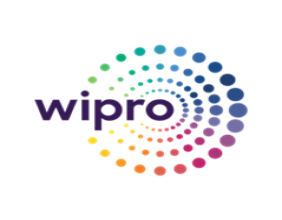Choosing between Python and C++ is a vital decision in software development. Your choice depends on whether you need development flexibility and speed or performance and system-level control. Python is often preferred for its simplicity and fast iteration, while C++ is selected for projects demanding efficiency, fine-tuned control and high execution speed.
For teams prioritising rapid development, working with a Python development company can unlock the full potential of Python’s capabilities. From data science to web applications, Python offers a versatile and developer-friendly experience, especially when compared to lower-level languages like C++.
This article examines both programming languages in different technical contexts and use cases, aiming to guide you in selecting the best option for your project
Programming Language
Python is a high-level, interpreted programming language praised for its clean syntax and ease of use. It supports multiple paradigms including procedural, functional and object-oriented programming, making it flexible and beginner-friendly.
C++ is a compiled, statically typed language that offers low-level memory access, making it ideal for system-level software and performance-critical tasks. It supports object-oriented and generic programming, but comes with a steeper learning curve.
Embedded Systems
C++ is widely used in embedded systems due to its close-to-hardware access and precise memory control. In these resource-constrained environments, optimising performance and memory usage is essential, which makes C++ the natural choice.
Python is less commonly used in embedded systems because of its larger runtime footprint and slower execution. That said, lightweight versions like MicroPython have made Python viable for basic embedded tasks and rapid prototyping.
Operating Systems
C++ is a standard choice for developing operating systems and related tools. Its compiled design and capacity to directly access system resources enable efficient operations at the machine level.
Python is typically used alongside operating systems for scripting, automation, or testing purposes, rather than as the main language for OS development.
Machine Learning
Python has become the go-to language for data science and machine learning, largely due to its ease of use and the strength of its ecosystem. Its simplicity, along with powerful libraries like PyTorch, Scikit-learn, and TensorFlow, has helped it secure a leading position in the field.
C++ is often used to implement the backend of these frameworks for performance-critical operations. However, developers typically interact with the high-level Python API during development.
Python Code
Writing Python code is generally faster and more intuitive. Developers are able to concentrate on building features instead of worrying about syntax intricacies or memory management. Its dynamic typing makes it ideal for scripting and automating routine tasks.
C++ code is more verbose and demands a clear understanding of memory and data types. While this complexity allows for fine-tuned control, it also slows down development and increases the risk of errors.
Python vs C
While this article compares Python to C++, it's important to recognise that Python vs C presents even starker contrasts. C is procedural, lacks object-oriented features and is even closer to hardware. Python abstracts many of these complexities, offering a more developer-friendly experience at the cost of performance.
Data Analysis
Python is the industry standard for data analysis. With libraries like Pandas and NumPy, analysts and scientists can process, visualise and transform data efficiently.
C++ is rarely used for direct data analysis but may power back-end algorithms that are then accessed through Python interfaces to combine speed with usability.
Web Development
Python excels in web development with frameworks such as Django and Flask. These tools enable rapid development cycles, scalable architecture and clean, maintainable code.
C++ is not a popular choice for modern web development, although it may be used in back-end systems where high performance is necessary, such as real-time trading platforms or game servers.
Memory Management
Python handles memory automatically through built-in garbage collection, helping developers prevent memory leaks and simplifying the development workflow.
C++ relies on manual memory management. While this allows greater optimisation, it also increases the chances of memory-related bugs. Developers must manually allocate and deallocate memory using pointers.
Game Development
C++ is the standard for game development, especially when building game engines such as Unreal Engine. Its raw performance, static typing and tight memory control make it ideal for rendering engines, physics simulations and real-time systems.
Python plays a supporting role in game development, usually for scripting gameplay elements, rapid prototyping or tool development.
Manual Memory Management
Manual memory management in C++ gives developers precise control over how memory is allocated and released. This is useful for systems with strict performance or memory constraints, though it can lead to memory leaks and bugs if mishandled.
Python abstracts memory management entirely. Developers do not need to worry about deallocating memory, making it safer for rapid development and less experienced programmers.
Automatic Memory Management
Python’s automatic memory management through reference counting and garbage collection simplifies the development process. It reduces the overhead of manual memory handling and improves code safety.
C++ developers can use smart pointers or external libraries to simulate automatic memory management, but these approaches require more setup and understanding.
Development Speed
Python offers significantly faster development speed than C++. With its clear syntax, dynamic typing, and rich standard library, developers can develop and refine projects rapidly.
C++ development typically takes longer due to the need for detailed planning, compilation and debugging. However, the resulting applications are often more efficient and better optimised for speed.
Garbage Collection
Python includes built-in garbage collection, which automatically reclaims memory from unused objects. This makes it ideal for applications where developer productivity and reliability are more important than peak performance.
C++ does not include garbage collection by default, giving developers complete responsibility for memory lifecycle management.
Object Oriented Programming Language
Both Python and C++ are object-oriented programming languages. Python simplifies creating and using classes and objects. This encourages reusable and maintainable code.
C++ offers advanced object-oriented features like multiple inheritance and function overloading. These are powerful tools but demand careful use to prevent bugs.
Compiled Language
C++ is a compiled language, which translates source code into machine code before execution. This leads to high performance and efficient memory usage.
Python is interpreted, meaning code is executed line by line at runtime. This allows for greater flexibility but results in slower performance, particularly for CPU-intensive tasks.
Python and C
Python and C or C++ are often used together in hybrid development. Performance-critical components can be written in C++, while Python handles higher-level logic, scripting and user interfaces. This approach blends flexibility with performance.
Popular Programming Languages
Both Python and C++ rank highly among the most popular programming languages globally. Python’s popularity continues to rise due to its simplicity and wide range of use cases. C++ maintains a strong following in areas where performance is non-negotiable.
Most Popular Programming Languages
Python consistently ranks at the top in surveys among developers, especially in fields like web development, automation, and data science. C++ remains highly regarded in academia, gaming, systems development and embedded systems.
Rapid Development
Python's syntax and dynamic features make it ideal for rapid development and prototyping. This is especially valuable in startups and innovation-focused teams where speed is crucial.
C++ offers less speed during development but produces highly efficient and stable software when performance matters most.
Performance Critical Applications
C++ excels in performance-critical domains such as game engines, real-time systems, embedded firmware, and operating system kernels, where speed and efficiency are paramount. It gives developers granular control over CPU and memory usage.
Python offers sufficient performance for most high-level applications but is rarely used in situations where raw performance is critical.
Conclusion
When it comes to Python vs C++, choosing the right tool for performance vs flexibility depends on your project’s goals. Python excels at simplicity, development speed and versatility, while C++ remains the top choice for performance, control and system-level programming.
For most business applications, especially involving automation, data science, or web development, Python offers a more efficient and accessible path. For applications involving embedded systems, game engines, or high-performance computing, C++ is the more appropriate choice.
By understanding these strengths and trade-offs, development teams can select the most effective language or combination of languages for their needs.
The article has been provided and sponsored by Tom Sire. Tom is a digital marketing expert and software enthusiast from Glasgow, passionate about SEO, automation, and tech trends that drive business growth in today’s fast-paced digital world.




